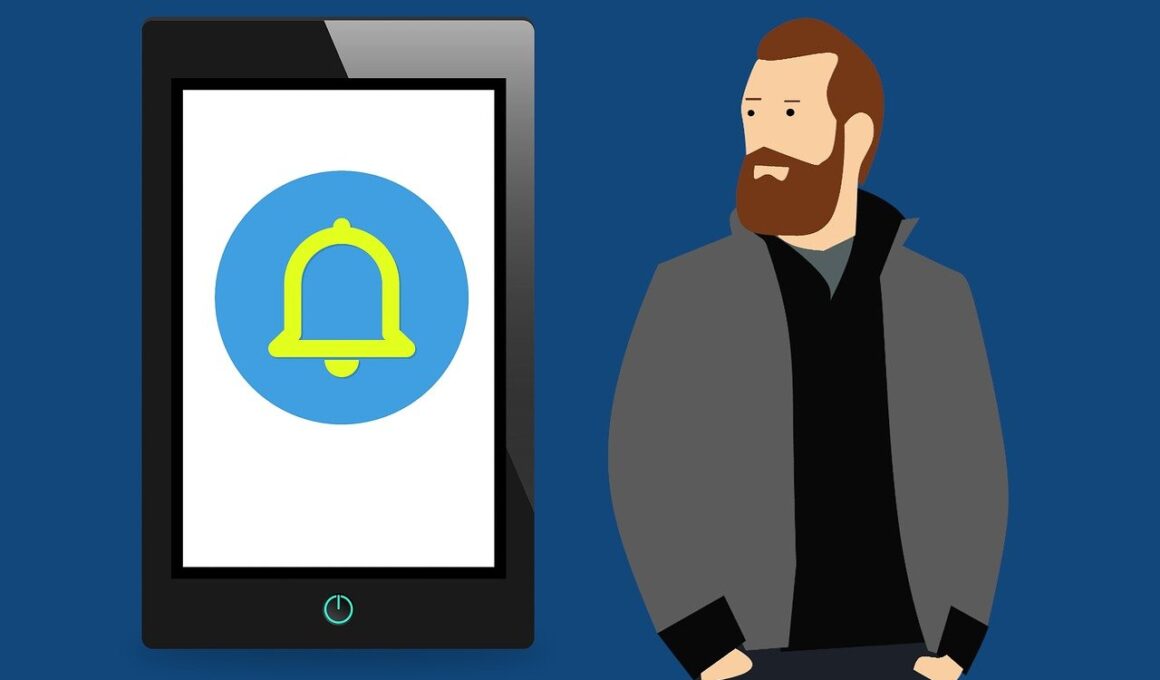Leveraging Push Notifications in Finance App Marketing
In today’s digital age, finance applications are crucial in managing personal, business, and investment finances. One of the most effective strategies to engage users is through push notifications. These notifications are messages sent directly to a user’s mobile device, even when the application isn’t active. Research indicates that personalized push notifications can significantly increase user engagement rates when implemented thoughtfully. By delivering tailored content, such as reminders, alerts, or offers, financial apps can foster stronger relationships with clients. Financial tools must leverage this mechanism without overwhelming users, as inundation can negatively affect user experience. User segmentation and understanding their preferences will lead to better-targeted messaging.
When developing a finance app, incorporating features for push notifications is essential. These features should be user-friendly and intuitive. Users should have options to customize the types of notifications they wish to receive. Allowing users to choose their frequency also improves satisfaction. Notably, distinguishing between transactional alerts and promotional messages is critical. Transactional alerts are essential for maintaining account activity awareness, whereas promotional messages should provide unique value for financial products and services. Success in mobile marketing hinges on understanding these distinctions and applying them effectively. Engaging users with relevant content can significantly enhance your application’s retention rates.
Best Practices for Effective Push Notifications
Implementing best practices can maximize the effectiveness of push notifications in finance apps. First, timing is crucial; sending notifications during peak user activity ensures better visibility and engagement. Additionally, leveraging user data to personalize messages greatly enhances the likelihood of interaction. Keeping messages concise and compelling will capture attention and prompt action. Using strong calls to action directs users to the desired outcome, whether checking a balance, activating an offer, or upgrading services. Testing different message formats and timing allows creators to optimize future notifications and find the most effective combinations for their audience.
Another vital aspect is respecting user privacy and preferences when sending notifications. Financial apps often deal with sensitive information, making user trust paramount. Always include opt-in options for users to give explicit consent for marketing messages. Moreover, allow users the choice to opt-out whenever they desire. Transparency in communication regarding how their information is used strengthens trust and loyalty. Building a solid foundation of trust between the user and the application is essential for long-term retention. Providing users with an avenue to control their notification settings allows them to feel secure with their data, further enhancing customer relationships.
Measuring the Impact of Notifications
To evaluate the effectiveness of push notifications in finance app marketing, measurement mechanisms must be established. Utilize analytics tools to track user engagement levels and conversion rates. Metrics such as open rates, click-through rates, and user retention figures are significant indicators of notification effectiveness. A/B testing different messages or timings and analyzing the results can yield insights into user behavior. Learning what resonates with users allows for continuous improvement and refines communication strategies. Adapting notifications based on feedback demonstrates to users that their experience is prioritized, reinforcing their loyalty to the application.
An additional method involves engaging users through surveys after significant interactions triggered by notifications. Understanding their preferences and experiences can provide crucial feedback for future app updates and marketing strategies. Consider utilizing push notifications to invite users to fill out these surveys or provide feedback on their experience with the app. Continuous listening to the audience ensures that the finance app evolves to meet their needs and expectations. Offering incentives, such as discounts or bonus features for completed surveys, can significantly increase participation rates and enrich data collection efforts.
Conclusion: The Future of Push Notifications
As mobile technology advances, the potential for push notifications in finance apps remains promising. Trends indicate a shift towards more interactive, real-time communications where AI-driven personalization will take precedence. This allows for proactive rather than reactive engagement strategies with users. By utilizing advanced algorithms, financial applications can provide notifications that anticipate user needs, enhancing the user experience significantly. Staying ahead of the curve requires continual adaptation and innovation in notification strategies, as user expectations will evolve over time. Embracing these innovations can lead to profound changes in user engagement.
Ultimately, the integration of sophisticated push notification systems can dramatically transform user engagement in finance applications. Striking the right balance between promotional content and genuinely helpful communication is key. With insightful strategies, finance apps can not only retain users but also convert them into lifelong customers. Engaging effectively through push notifications positions your finance app as a reliable tool for financial management. This connection not only builds customer trust but also fosters a sense of community among users. Thus, finance apps must leverage push notifications as a core component of their marketing strategy to thrive in today’s competitive landscape.


